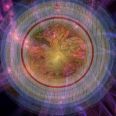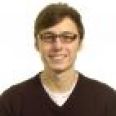Staff
25 October 2016
Physics Colloquia Series Presents: Dr. Trevor Cross,Group Chief Technology Officer, e2v, entitled '60 years of imaging technology'
From the earliest commercial production of electronic image sensors for television in the 1950s, to the diverse application of specialist silicon image sensors for the Hubble space Telescope to digital dentistry this talk will outline the manufacturing technology and changes through 60 years at e2v. Somewhat surprisingly, there are today lessons to be learned, and technologies to be applied from this to the emerging new platform technology of ultra-cold atom sensing and metrology.
25 October 2016
Physics Colloquia Series Presents: Dr Cait McPhee, University of Edinburgh, entitled 'Proteins as switchable Janus ellipsoids'
Janus particles are micro- or nano-scale particles whose surfaces have two or more distinct physical properties. Such asymmetry results in interesting self-assembly properties, but homogeneous Janus particles can be difficult to synthesize. The protein BslA (Bacterial Surface Layer A) is a small (~4 nm) protein produced by the bacterium Bacillus subtilis that has a hydrophilic ‘body’ to which is appended a surface-exposed hydrophobic ‘cap’.
25 October 2016
Physics Colloquia Series Presents: Professor Séamus Davis, Cornell University, entitled 'Visualizing Quantum Matter'
Everything around us, everything each of us has ever experienced, and virtually everything underpinning our technological society and economy is governed by quantum mechanics. Yet this most fundamental physical theory of nature often feels as if it is a set of somewhat eerie and counterintuitive ideas of no direct relevance to our lives. Why is this?
25 October 2016
Physics Colloquia Series Presents: LIGO Special by Professor Gabriela Gonzalez entitled 'Searching for - and finding! Gravitational Waves'
On September 14 2015, the two LIGO gravitational wave detectors in Hanford, Washington and Livingston, Louisiana registered a nearly simultaneous signal with time-frequency properties consistent with gravitational-wave emission by the merger of two massive compact objects. Further analysis of the signals by the LIGO Scientific Collaboration and the Virgo Collaboration revealed that the gravitational waves detected by LIGO came from the merger of a binary black hole system. This observation, followed by another one in December 2015, marked the beginning of gravitational wave astronomy.
22 September 2016
Colloquia Series Hilary Term 2017

The following lectures will be given at 3.30pm on Fridays in the Martin Wood Lecture Theatre, Clarendon Laboratory, Parks Road (unless otherwise stated). Tea will be served in the Physics Common Room at 4.30 pm.
The aim of the colloquia series is to share with members of the department the latest information on physics research and developments. Undergraduates, graduates, postdocs, faculty members and support staff are all encouraged to attend these lectures.
19 July 2016
Royal Society Annual Awards - Kavli Medal and lecture winner 2017
Congratulations to Henry Snaith who has been awarded the Royal Society Kavli Medal and lecture winner 2017. This award is made for excellence in all fields of science and engineering relevant to the environment or energy. Henry receives this award for his discovery and development of highly efficient perovskite solar cells which promise to dramatically increase the efficiency and reduce the cost of solar energy. You can view the citation here.
7 July 2016
Nicholas Kurti Prize 2016
Condensed Matter Physics is delighted to announce that Marein Rahn, third year postgraduate student, has been awarded the Nicholas Kurti Prize 2016 for distinguished work by a third year graduate student in Condensed Matter Physics.
Many congratulations, Marein.
7 July 2016
David Ryan Prize 2016

Condensed Matter Physics is delighted to announce that David McMeekin, second year postgraduate student, has been awarded the David Ryan Prize 2016 for the best research presentation by a second year student at the annual poster session.
Many congratulations, David.
Halley Lecture
This year's Halley Lecture will be delivered by Professor Scott Tremaine FRS, Richard Black Professor, School of Natural Sciences, IAS, Princeton University, on Wednesday 8th June 2016 @ 5pm in the Martin Wood Lecture Theatre.
Leanne O'Donnell 01865 613 973
Leanne.odonnell@physics.ox.ac.uk
Biological Physics Seminar Week 6

Week 6 Biological Physics Seminar
10.00: Tea, coffee, cakes, biscuits
10:10: Marco Fritzsche (Eggeling Group WIMM)
Mechanisms of actin cytoskeleton organisation in T-cell activation
10.45: Christian Eggeling (WIMM)
Biophysics of membranes - new Insights from super-resolution STED microscopy


